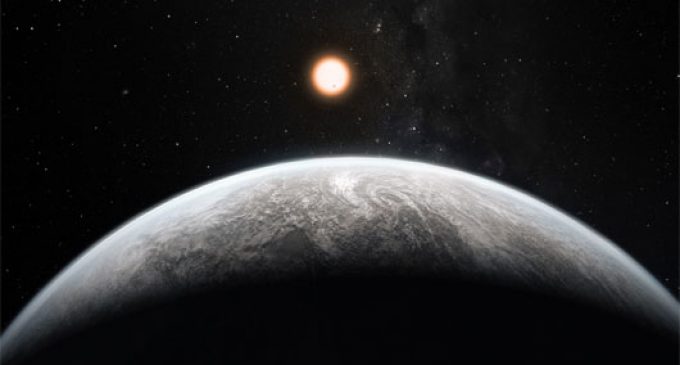Is newly discovered Kepler -186f right for life?

Astronomers have for the first time discovered a rocky, Earth-sized exoplanet that might hold liquid water—a necessary ingredient for life as we know it.
The planet Kepler-186f is the fifth and outermost world orbiting the red dwarf Kepler-186. The slow-burning sun is smaller and cooler than our own. Too faint to be seen without a telescope, it’s roughly 500 light years away in the direction of the northern constellation Cygnus (a light year is the distance light travels in a year).
Two attributes make the newfound planet special. First, it’s within its star’s habitable zone. That’s the range of orbital distances where a planet with an atmosphere could harbor lakes, rivers, or oceans that wouldn’t freeze or boil away.
Second, the planet is about the size of Earth. It’s not big enough to accumulate a thick atmosphere of hydrogen and helium as gas giants like Jupiter and Saturn have.
The findings are published in the journalScience.
“One of the most interesting questions in science is whether life can arise on other planets or, alternatively, if life on this planet is unique,” says Fred Adams, professor of physics and astronomy at University of Michigan. “The discovery of planets with Earth-like properties is one important link in the chain required to answer this question. And the discovery of the planet Kepler-186f is an important step toward finding a planet that is like our Earth.”
Over the past two decades, astronomers have found some 1,800 exoplanets in other solar systems. Only 20 orbit their stars in a habitable zone. But these are all thought to be much larger than the earth, according to the SETI Institute. The most likely candidates for habitable planets would be smaller than 1.5 times the size of Earth. Researchers were able to estimate the size of Kepler-186f by observing how the star dimmed as the planet crossed it.
Adams, a theoretical astrophysicist, helped to interpret the results gathered with NASA’s Kepler telescope, which searches for Earth-like planets. Data from the space telescope gave researchers estimates of the planet’s radius and how long it takes to orbit the star. The researchers found that the radius of Kepler-186f is 1.1 times the radius of Earth and that the planet’s year is 130 days long.
Adams was part of the team that used the data to answer questions such as where the solar system’s habitable zone is, what the planet is most likely made of, and whether it could hold on to an atmosphere, for example.
“We found that this solar system does seem to be stable, it can be formed under reasonable conditions, and the planet is likely to be rocky, or Earth-like, and not gaseous,” Adams says.
The system may be too dim for follow-up surveys to find the composition of its atmosphere, even with next-generation telescopes, says first author Elisa Quintana. “However, our research tells us that we should be able to find planets around bright stars that will be ideal targets to observe with James Webb.
NASA’s Webb orbiting telescope, which is still being built, will be able to directly image planets around nearby dwarf stars, and use advanced techniques to characterize their atmospheres. The SETI Institute’s Allen Telescope Array has been observing the Kepler system for signs of intelligent life.
NASA and the SETI Institute supported the research.
Source: University of Michigan








There are no comments at the moment, do you want to add one?
Write a comment